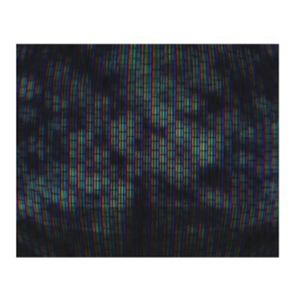 Sebastian Banaszczyk has been strongly refining his craft in "sound recycling," or essentially utilizing limited, conceptually relevant recordings as the only basis for compositions. These two separate albums, for two distinctly different dramatic performances, have some consistencies between them, but each stand on their own as distinct works, as well as representing the next stage in Bionulor's discography.
Sebastian Banaszczyk has been strongly refining his craft in "sound recycling," or essentially utilizing limited, conceptually relevant recordings as the only basis for compositions. These two separate albums, for two distinctly different dramatic performances, have some consistencies between them, but each stand on their own as distinct works, as well as representing the next stage in Bionulor's discography.
Coriolanus is a modernized take on Shakespeare's drama, while SKAZAna is a biographical piece of a girl sexually abused by her stepfather, so both are drastically different in content, with neither being light works.Banaszczyk himself is an actor, and thus he approached both scores from a different perspective than just a composer would, which strengthens that bond between score and performance expertly.
Coriolanus is the longer of the two works at nearly 78 minutes and 26 untitled pieces, with the original source material extracted from classical instruments subjected to heavy processing and treatments.The use of traditional sounds and instruments subjected to modern composition fits well with the modernized approach to the theatrical work it was composed for as well.
While the actual instruments sampled and used remains ambiguous, hints of melody and music drift throughout the album, often times just out of focus or interrupted by outbursts of digital interference or noise.On the sixth and 12th pieces especially what almost sounds like a piano appears frequently. On the latter, Banaszczyk tosses in some raw, jarring noise bursts to keep things from becoming too comfortable or complacent.
The 14th piece, clocking in at a bit over ten minutes is definitely the lengthiest, and with that duration Banaszcyzk allows the heavily treated tones and textures to drift outward extensively, with the resulting composition sounding more in line with some of the earliest electro-acoustic and electronic composers in its slow build and nuance.
samples:

For SKAZAna, the source material is the voice of writer and actress Sylwia Oksiuta, and the sound recycling pulls it into a world that has pretty much no semblance of humanity about it.Much of the melody or hints of musicality from Coriolanus are gone, replaced instead with disembodied noises or mangled low bit rate samples.The second and third parts especially are all a series of stuttering, delayed clatters and haunting, frigid swells of sound bathed in what sounds like spring reverb.
This album is much more about texture and noise rather than tone, with echoing bits and windy passages of noise creating a cold, isolated atmosphere that fits the subject matter perfectly.Some pieces seem to capture Oksiuta's breath, processed and stretched into hissy static and harsh, noisy outbursts.It is only on two pieces (the 17th and 20th) that other sources are used, the former consisting of fragile, bell like noises and ringing sounds, while the latter is surprisingly traditional, with a slew of strings and orchestral instrumentation bringing the score to a rather conventional coda.
While I was not able to experience any of the visual components to these performances, Banaszczyk's audio accompaniment works well enough as stand alone compositions.The recurring themes and sounds that appear throughout is perhaps the best clue that these are not necessarily albums independent of their original application, but that is only rather noticeable on Coriolanus, and even then it is not repetitive to the point of being a problem.Having followed Bionulor's work roughly since the project's inception, it has been a strong trajectory of evolution, with each work showing more and more expertise in both his use of sounds and his overall compositions, and these two works are no different.
samples:
 
Read More

